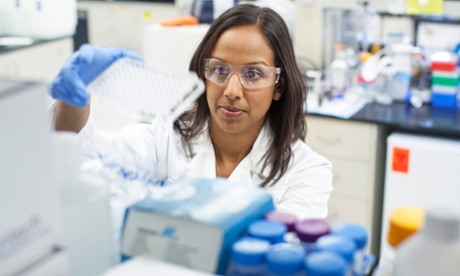
Sir Richard Branson last month re-introduced what he calls Plan B, which is intended to be “a new blueprint for better business that prioritizes people and the planet alongside profit”.
Branson deserves credit for holding businesses to a higher standard. Plan B, which includes business challenges such as “lead for the long run”, takes an important step towards ending what it calls “short-termism”. But it doesn’t go far enough.
The plan also needs to push the business community to focus on the science needed to support people and the planet. Without more funding for long-term science and technology development for future sustainability solutions, we’ll all lose.
There is so much emphasis today on building clever new apps that generate huge returns for the investors and inventors, but almost none on the science that will really enable us to meet the grand challenge of the 21st century: resource scarcity.
If we don’t ensure that the world’s growing population has access to the energy, water, food and materials needed to sustain and improve their quality of life, Plan B won’t be enough to save us.
And big, meaningful breakthroughs in these areas take time. Since the practical invention of silicon photovoltaic devices in the mid-1950s, for example, the industry has required years of advanced research (pdf) to drive the efficiency up and the cost down enough to support a true explosion in solar installations. Often, this research was funded through public and private support, without regard for this quarter’s bottom line. We’re benefiting from this foresight now.
The question is, who will fund tomorrow’s big breakthroughs? How do we get beyond short-termism – the incremental, profit-driven view of corporate sustainability – and back to building a pipeline filled with long-term solutions?
At the moment, very few companies are willing to take risks and support these efforts. Google, famously, has invested in internal research initiatives outside of its core business – ranging from self-driving cars to extending the length of human life. Even there, though, engineers who worked on Google’s now-defunct RE<C program wrote that, in retrospect, they felt their efforts had been too focused on incremental improvements at the expense of more audacious goals.
This wasn’t always the case. In the past, companies proudly supported research institutions like Bell Labs, Xerox Park and the labs at IBM and GE, which came up with such breakthroughs as the transistor, the computer mouse and even the first useful silicon solar modules. Today, R&D teams at most of those companies have little time to think long term, and their programs are fragile and likely to be cut whenever business hits a speed bump.
Increasingly, universities are expected to fill this pipeline. But if companies often focus almost exclusively on near-term profits, academics often have the opposite issue: focusing on such long-term problems that they can fail to find a path to turn their research into any real-word impact.
In the past few years, several companies have formed strategic relationships with universities that are designed to bring out the best of both worlds, and to build a pipeline of pre-commercial research programs that could transform the future.
In 2011, Dow Chemical committed $250m to strategic research investments at 11 major universities, including the California Institute of Technology. Meanwhile, companies including ExxonMobil, GE, Schlumberger, Toyota and DuPont together have spent nearly $200m since 2002 to support early-stage research on alternative energy at Stanford University. And BP has funded the Energy Biosciences Institute, a collaboration involving the University of California at Berkeley, the University of Illinois and Lawrence Berkeley National Laboratory, with a whopping $500m.
Unfortunately, these partnerships are few and far between, especially given the scale of the challenges, including the looming threat of climate change. Today, most companies seek incremental improvements that will not irk investors and tout these as part of their sustainability programs. But these programs and initiatives – putting today’s solar panels on the roof, retrofitting offices with LEDS and the like – only focus on current practices and technologies. They’re necessary, but far from sufficient.
We need to build a system that recognizes that the development cycle can begin many years, or even decades, before the innovations can yield a financial return. We need to find a way to support the earliest stages of work, as well as to provide the sustained support needed to turn those ideas into realities – from lab to pilot projects, from trials to mass production.
Only this sustained investment in long-term science and technology development can bring about the game-changing research needed to tip the world’s future balance toward sustainability.
An important first step would be to add a new challenge to Plan B: fund transformational long-term research. With that addition, Plan B can boost its grade from a B+ to an A.
The technology and innovation hub is funded by BT. All content is editorially independent except for pieces labelled “brought to you by”. Find out more here.
Join the community of sustainability professionals and experts. Become a GSB member to get more stories like this direct to your inbox.

